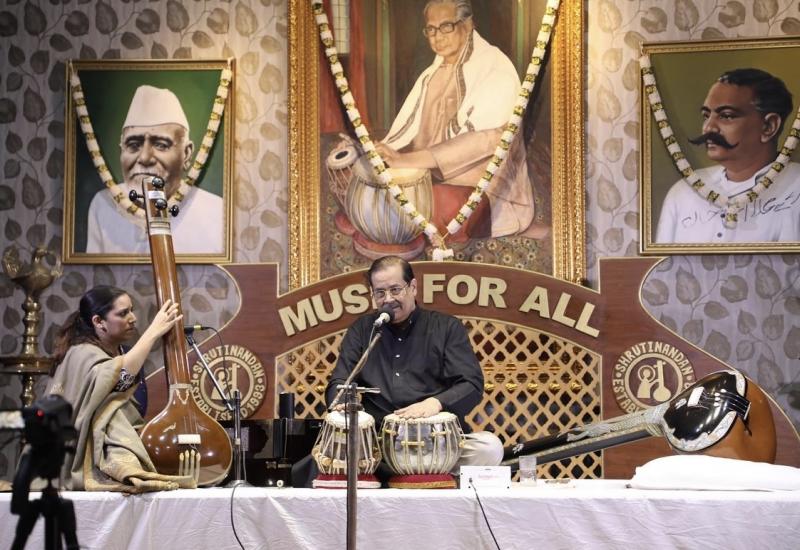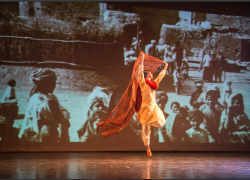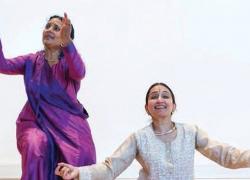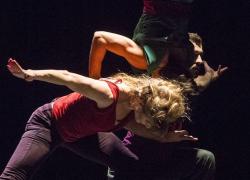Abhinaya - Beyond Binaries Part One
Kumudha Chandrasekaran, dancer and educator discusses the subject of ‘abhinaya’, the expressional and narrative part of dance with three well-known performers. The question before them: how to convey the shades in between the two ends of a spectrum, and what factors influence the artists’ choices? Is it their training, ideology, life experience, identity or a combination of all these.
Milk or lemon, mythology or metaverse, ambition or comfort, birding or bar hopping, democracy or dictatorship, glass full or glass empty, you get the drift. Despite the world and our experience of it changing with every passing day, there is an expectation to adhere to a binary stance, to choose between a ‘this’ or ‘that’, with the ‘or‘ being operative and imperative, in order to define, confine, and commit.
Binary thinking is fundamental. It allows for objective categorisation and eliminates complexities in definition. Taking the idea of ‘complexities in definition’ into the context of dance, we arrive at ‘abhinaya’, ever elusive and never within boundaries, where the binaries are ingrained in the self and in pedagogical practices. Putting the two together turned into an attempt to go beyond a binocular vision and create a view through a prism of identity, ideology, and artistry. A prism of mirrors creates a kaleidoscopic vision, which is the intention of this series, ‘Abhinaya - Beyond Binaries’, through the reflection of three artists, Mavin Khoo, Vidhya Subramanian and Narthaki Nataraj. With bharatanatyam as the common denominator and their gender identity in the background, the diversity in their learning journeys and artistic process led to a kaleidoscope of thoughts on abhinaya transcending beyond binary definitions. As artists who exist in the cusp of multiple dualities of identity and artistic practice, this series of three pieces on abhinaya will capture excerpts of responses and experiences from free-wheeling conversations with them on the subject. We start with their first thoughts on abhinaya and the binaries in that space, and discuss skill and process development; metaphor and subtext to build narratives; intention, authenticity and a negotiation to build individuality, through this series.
A simple and near translation of the word ‘abhinaya’, ‘abhi – towards’ and ‘ni – carry’ might be a good place to start, before navigating through the complex and dizzying maze, where on one hand, every singular choice in the process of dance making and meaning making can be viewed through a binary lens. On the other hand, the seemingly contrasting binaries in abhinaya such as lokadharmi (common, everyday )and natyadharmi (stylised, classical), tandava (vigorous) and lasya (lyrical) , at some point turn into momentary states that facilitate a certain bhava-rasa continuum.
Mavin Khoo began the conversation with his fascination over the ambiguity of the term ‘abhinaya’. “The choices are directed by what one really aspires for as an artist”, he said. The conviction in his eyes spoke when he said, “the rigour in the ritualistic structure of the margam, shamanistic in its own way, is crafted to land the dancer in an exhausted and vulnerable place, when performative stamina no longer exists and emotions organically flow”. While the state of ‘being present’ is considered a gratifying milestone in dancing, particularly in the delineation of abhinaya, he spoke of a state of ‘not being’, as his current pursuit in abhinaya. He emphasised musicality as something that has heavily impacted and informed his abhinaya, particularly his manodharma. He recollected from his early years that his face did not naturally articulate abhinaya underpinned by a certain technique, but his abhinaya explorations innately connected and responded to the musicality of his Guru, Guru Adyar. K. Lakshman.
Narthaki Nataraj brought up a certain connection and contradiction in the body-mind. She said that there was a deep connection with her sense of self, way before she became an artist, which is where her abhinaya comes from, like it was born with her. It is this connection that threw her into the space of natyam, and not her childhood environment. “In fact, I believe that no dancer could have been in a more isolated or opposite end of dance than me when I was young” she said. She stressed that aligning her anatomical and emotional self was not something she underwent for the sake of dance or acceptance in the field. It was what she found comfort in. On the other hand, a contradiction came from how she perceived herself from within, versus how she was perceived from the outside. “The beauty of abhinaya that I hold today was born out of this contradiction, my circumstances, and my response as a dancer, by finding the means through my body to express my feelings. Natyam, Tamil literature, and my femininity are the three horses that I am travelling with now” she added. In one breath she stated that she was dancing the same thing preserving the path laid by her Guru, Guru K.P. Kittappa Pillai, but also said that what she is dancing now is different. She clarified after a silence that it feels different to her now, different in the way her emotions flow for the same lyrics and music.
Vidhya Subramanian acknowledged that the binaries were very clear in her early years of dancing, with the male perspective set on a female body, and that the way she was taught to dance also showed in who she was. Questioning who she was and whether she was ok with this view of herself, blurred the binaries, making it organic. “There is a discomfort and I love and thrive on it”, she smiled. As someone who has lived in two different ends of the world, a certain composure and stability resonated as she said, “Drawing from life and the process of inner dialogue has been a running current ever since. The moss of experience that is gathered through one's life gives rise to an innate response to music, lyric, ideas, moments to the extent that the other character becomes real and palpable”. Abhinaya for her now is a conversation, a communication, with self, the characters portrayed, and the spectator, and this transition was catalysed by Guru Kalanidhi Narayanan. “It often gives rise to a deeply involved state that is difficult to return from, but the question is, does one want to? The line between realities, life and art is blurred”, she added.
A similar moment surfaced in conversation with Narthaki Nataraj. “Is this my truth or is this my act”, was a question that she said reminded her both of who she was and who is becoming. It takes me to this striking articulation of thought from Vidhya Subramanian that holds for any kind of binaries. “There are words that connote ends of a spectrum. This spectrum contains within it both ends as well, holding limitless combinations of features contained within these choices masquerading as binaries”.
Kumudha Chandrasekaran
Kumudha Chandrasekaran is a dancer, educator, and writer based in Bengaluru from the Temple of Fine Arts. Rooted in BharataNatyam, her practice embraces her exposure to different vocabularies in dance. She believes in inclusion and has headed a project catering to about 200 children at Spastics Society of Karnataka, that created an access for them to music and dance. She co-curates a performances series ‘Yati Gati’, that focuses on the dialogue between the artist and the audience, at Atta Galatta, a cultural hub in Bengaluru. Across her engagement with the arts, her work takes a non-binary stance, connecting the thinking and doing in dance. She holds a master’s degree in dance education from the Royal Academy of Dance, London.




















